Mechanically, the third page of the card (the first page that was constructed upon which the remaining three pages revolved) is basically a table mechanism with cutout areas allowing the viewer to see through to the background which is the same thing as the table top, mature wheat with grasshoppers crawling all over. A stylized sun face lifts up from underneath the table.
Any pop-up table is based on an I-bar mechanism running down the central fold, with stabilizing supports on each side. The table can be tall or sort, large or small. In this case the table fills the entire card so to appear as a cereal box.

When closed, a sun which is glued to an arm which in turn is glued to a crimp at the top of the central fold, slips back under the table. Grasshoppers on both sides of the table are compressed and disappear into a fold. The table is forced closed with the card. The table is not as wide as the card because its surface is elevated from the back of the card. Measured precisely so that the edges of the folded table match exactly to the edges of the closed card. See? That there is planning!

Bam! The sun is gone ↓.
Card folds flat. That's the thing, constructing a mechanism is one thing, but making it so that it folds back is another thing altogether.
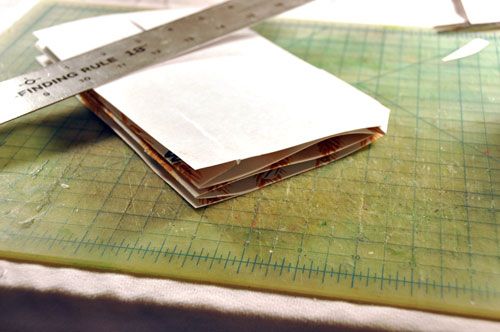
Here are a few more views of the open card, the bugs, the table, the intervening sub layer to the table, and the stylized sun face.

The grasshoppers are drawn as if they are hieroglyphics. There is a hieroglyphic for grasshopper, it's L4 (Invertebrata and Lesser Animals) in Gardiner's Sign List, snHm in the Manuel de Codage. But my grasshopper is better. There are only ten of them. Come to think of it, they look a little bit like crickets.
They're colored as I see fit and as my felt tip pens allow.
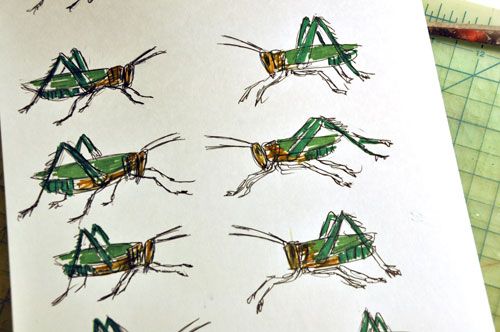
They're cut out. This part isn't so fun.
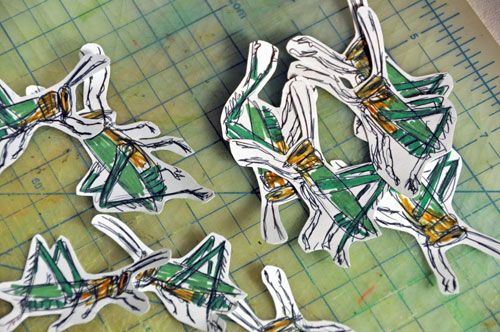
The background, the tabletop, and the partial intervening layer all have this pattern. I kept thinking as I was drawing it, "Gee, this is like a wallpaper." Now that the pattern is done it occurs to me I could have scanned it and printed copies.
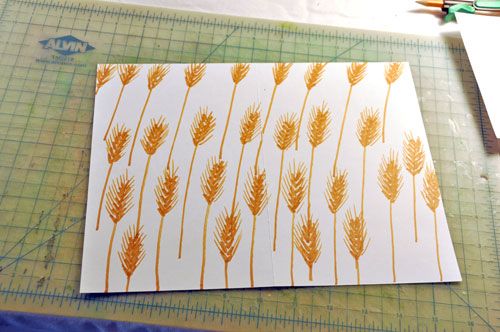
So there's that.
The head and front arms of the single grasshopper is also on a table except this time it's a tiny table and not one that is edge to edge and supports an entire background image. The second pair of legs are placed on two side extensions to the tiny table built at a lower height so closer to the background. The third pair of legs, the large jumping legs, are drawn onto the background. There seemed several approaches to this, but now that I'm being simple about things, I figured I could avoid drawing the body completely. Presumably it's lost to foreshortening.
Two blades of wheat grass placed on a separate "V" mechanism flop out towards the viewer when the card is opened. It appears as if the the bug is climbing on the blades but the legs do not actually touch. The blades lift back up and tuck inside the card when the card is closed, without interfering with the face of the grasshopper or with its legs. A few more blades are drawn onto the background along with a single wheat stalk.
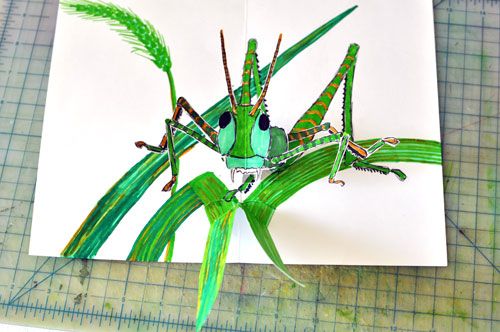
The two bottom blades of wheat grass are drawn on the background then over the "V" mechanism which is the base of the two moving blades, then onto separate strips that extend beyond the edges of the card toward the viewer. My original idea was to have the entire bug appear to jump toward the viewer but that would entail a three dimensional bug, tent for top wings, rounded face, etc., it's possible, I've done it before with a winged scarab, but it's a lot more complicated. This has a similar effect.
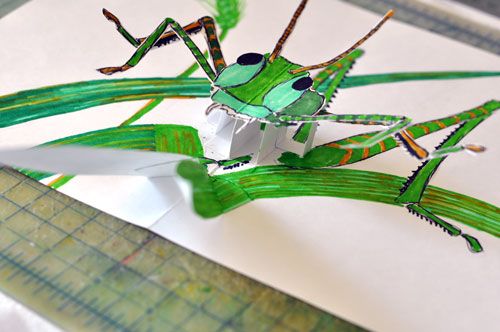
This is showing the little table mechanism upon which the head is glued along with the side extensions that support the middle set of legs.
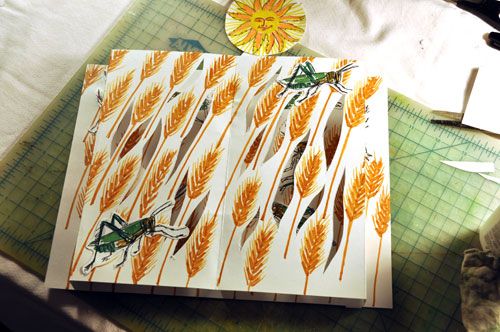
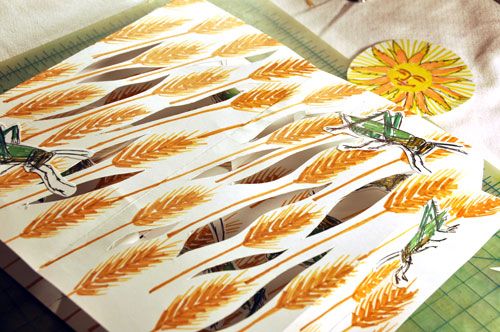

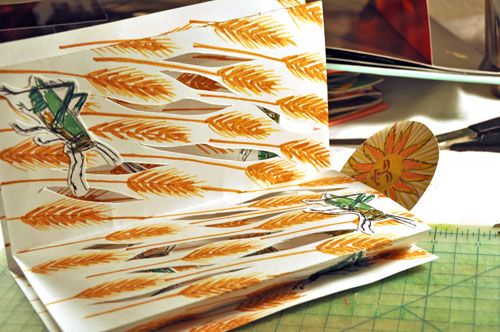
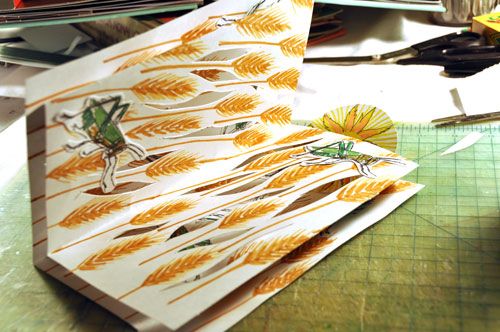
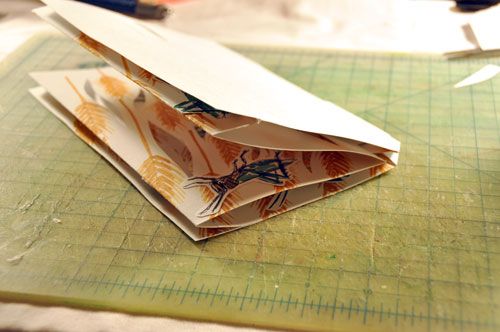
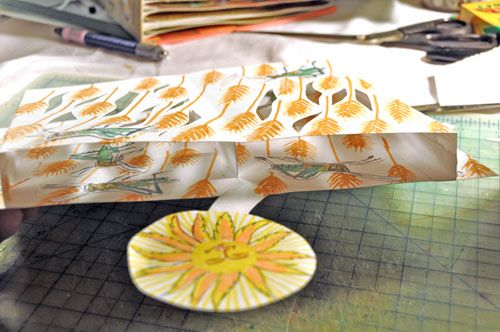





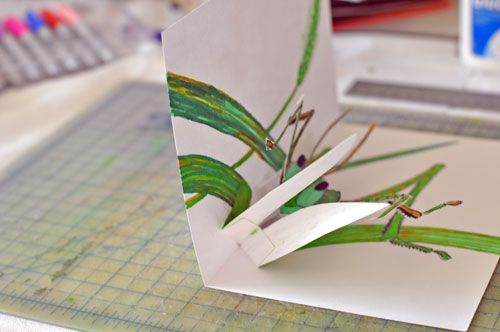
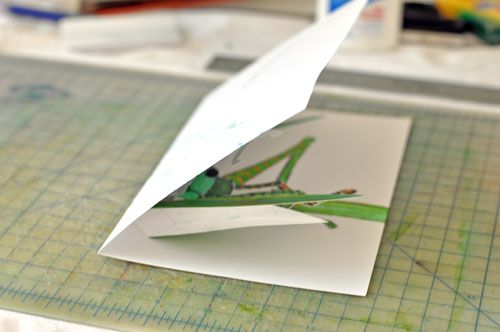

No comments:
Post a Comment